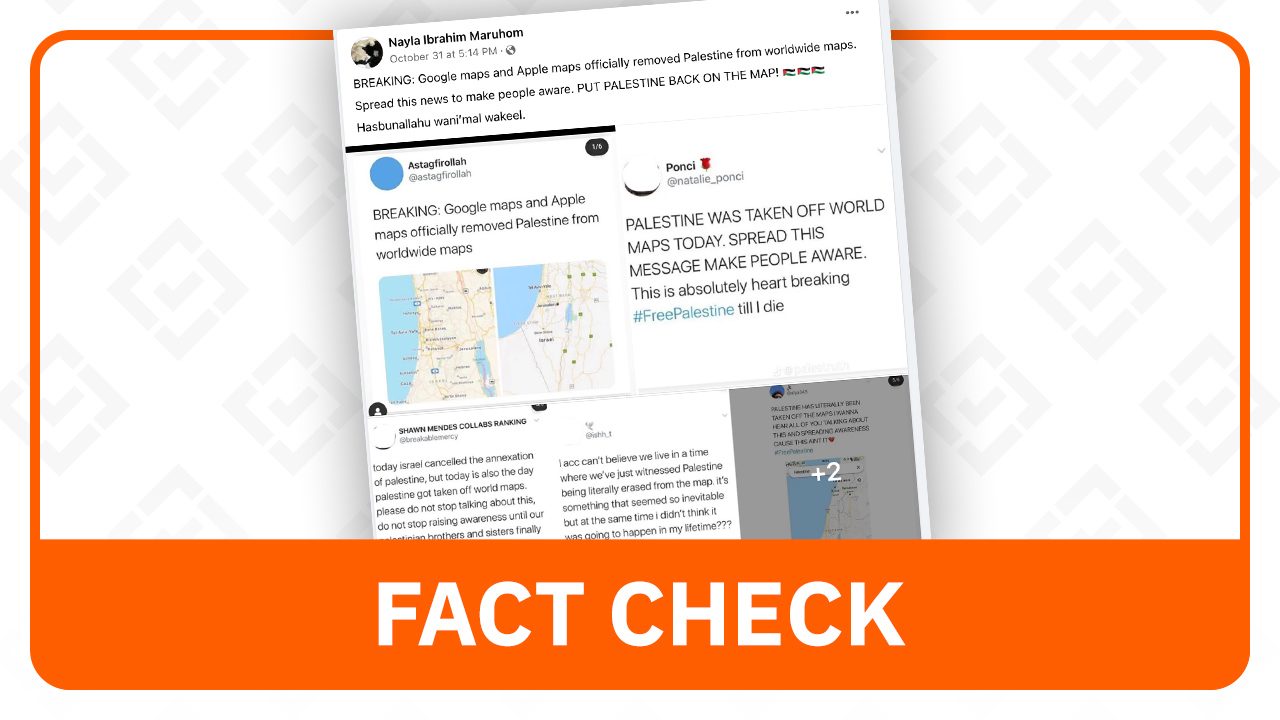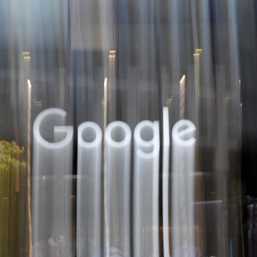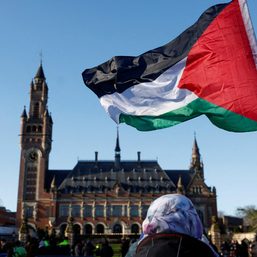SUMMARY
This is AI generated summarization, which may have errors. For context, always refer to the full article.

Claim: Google and Apple recently removed Palestine from their worldwide maps.
Rating: FALSE
Why we fact-checked this: The Facebook post that bears the claim was posted on October 31. As of writing, it has 439 shares and 234 reactions.
The post says: “BREAKING: Google maps and Apple maps officially removed Palestine from worldwide maps.”
The post was shared amid the ongoing conflict – now on its fifth month – between Israel and the Palestinian militant group Hamas.

The facts: Google and Apple did not delete Palestine from their respective maps, as there was no Palestine label to begin with.
Previously debunked: The misleading post revived similar claims that circulated in 2016, 2020, and 2021. Reputable international news organizations such as The New York Times, Wired, The Guardian, The Washington Post, The Media Line, Gulf News, Agence France-Presse (AFP) Fact Check, and USA Today have reported this and debunked the claim.
Google has not previously used a label for Palestine on its maps. In an email to Rappler on November 8, Google said its depiction of Palestine has not changed, and labels for the West Bank and Gaza Strip remain displayed on Google Maps.
Apple has not responded to Rappler’s request for comment, but previous reports by AFP Fact Check and The Media Line noted that “Palestine” was never denoted on Apple Maps either.
What’s on Google Maps: A search for Palestine on Google Maps will redirect to a map of the area which includes the labels for the West Bank and Gaza Strip. Instead of a label for Palestine, the area is outlined with a dashed gray line on Google Maps. According to Google, a dashed gray line is used to mark treaty boundaries, de facto boundaries, and disputed boundaries.
Google said it does not label the borders for Palestine due to the lack of clear consensus across international governing bodies on its territory.
History of disputed territory: After World War I and the collapse of the Ottoman empire, Britain took control of the area known as Palestine, which was inhabited by both Jews and Arabs as well as other ethnic groups. Palestine was intended to be established as the “national home” of the Jewish people in 1917 through the Balfour Declaration. (PANOORIN: Ano ba ang hugot ng Israel-Hamas war?)
Amid growing tensions between the Jews and Arabs, the United Nations (UN) adopted Resolution 181 in 1947 to split Palestine into separate Jewish and Arab states, with Jerusalem under international control. The plan, however, was not implemented as it was rejected by Arab leaders.
In 1948, Zionist forces declared the creation of the State of Israel and claimed 78% of Palestine. Around 750,000 Palestinians were forced from their homes during what they call the Nakba or “catastrophe.”
Israel and Palestinian groups have since been in a long-running conflict, with the latest outbreak of violence marked by Hamas’ October 7 attack on Israel. (TIMELINE: Conflict between Israel and Palestinians in Gaza)
Statehood: Palestine’s statehood remains controversial despite a decades-long call to be recognized as an independent state. On November 15, 1988, former Palestinian leader Yasser Arafat declared the independence of the State of Palestine with East Jerusalem as its capital. In 2012, the UN recognized Palestine as a non-member observer state.
While 139 of the 193 UN member states recognize Palestine as a state, several countries do not, given the ongoing territorial disputes with Israel. The recognition of Jerusalem as Israel’s capital, and the establishment of the Israeli-Palestian border, are among these disputes. – Ailla Dela Cruz/Rappler.com
Keep us aware of suspicious Facebook pages, groups, accounts, websites, articles, or photos in your network by contacting us at factcheck@rappler.com. You may also report dubious claims to #FactsFirstPH tipline by messaging Rappler on Facebook or Newsbreak via Twitter direct message. You may also report through our Viber fact check chatbot. Let us battle disinformation one Fact Check at a time.
Add a comment
How does this make you feel?






















There are no comments yet. Add your comment to start the conversation.